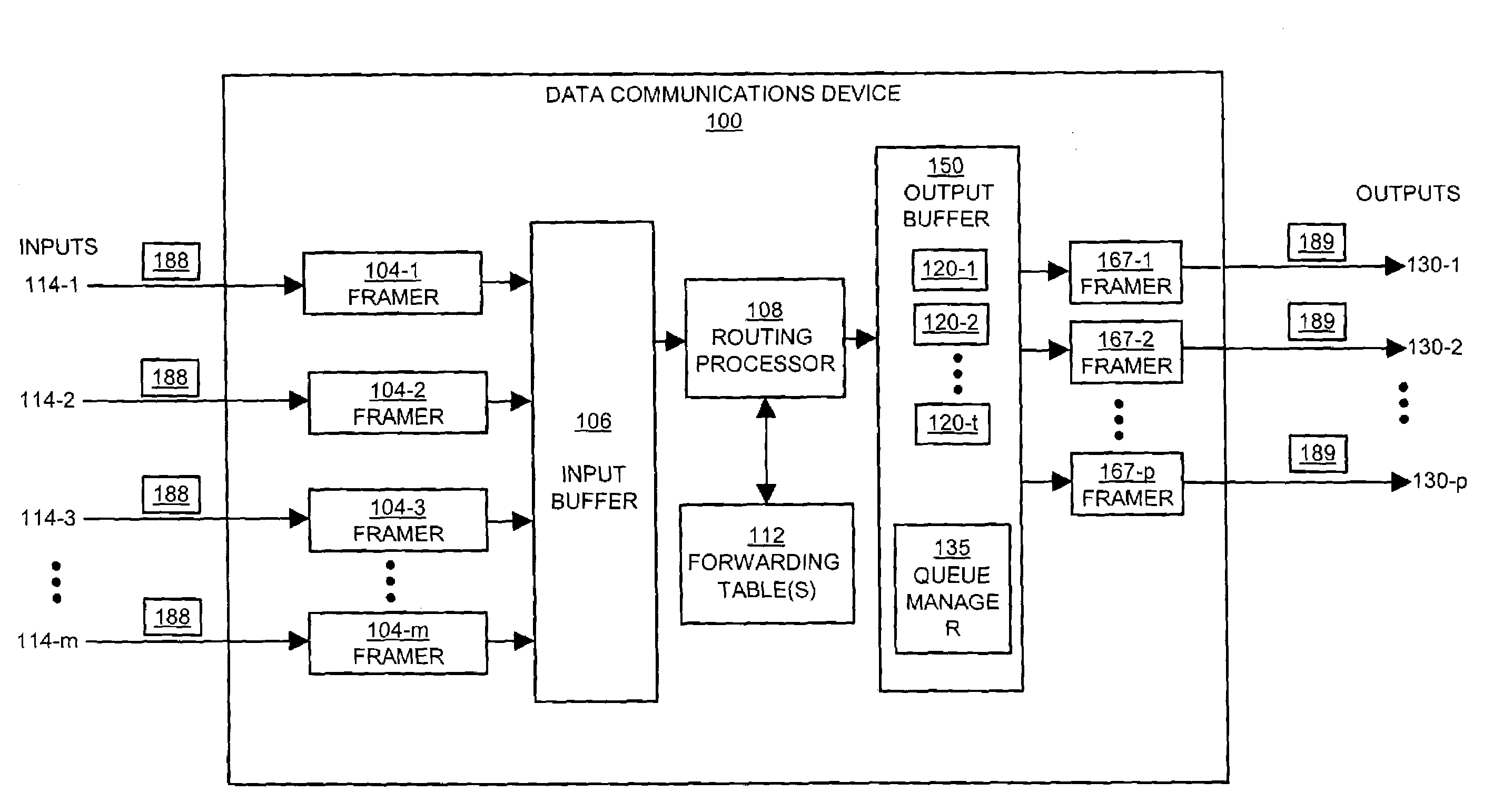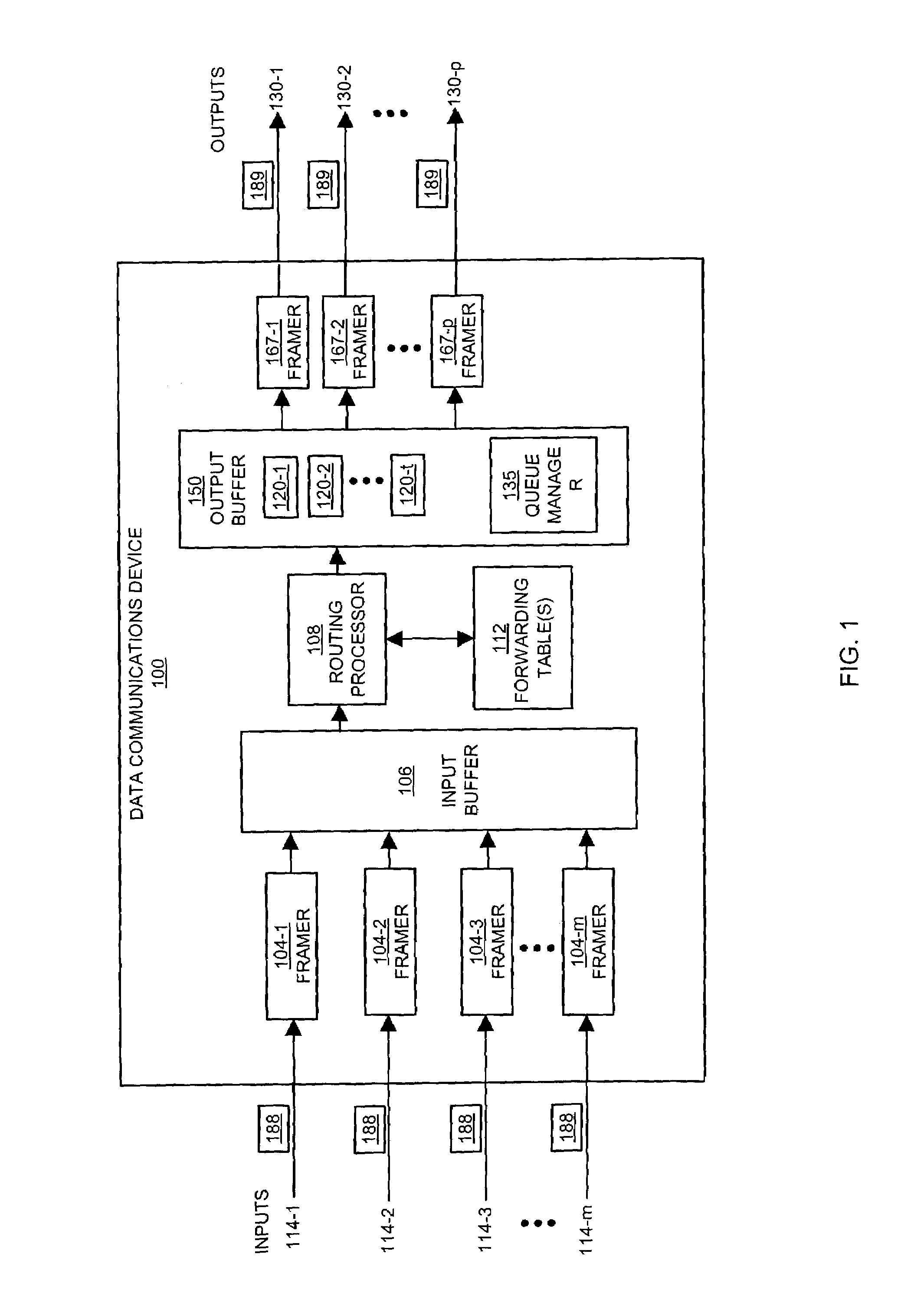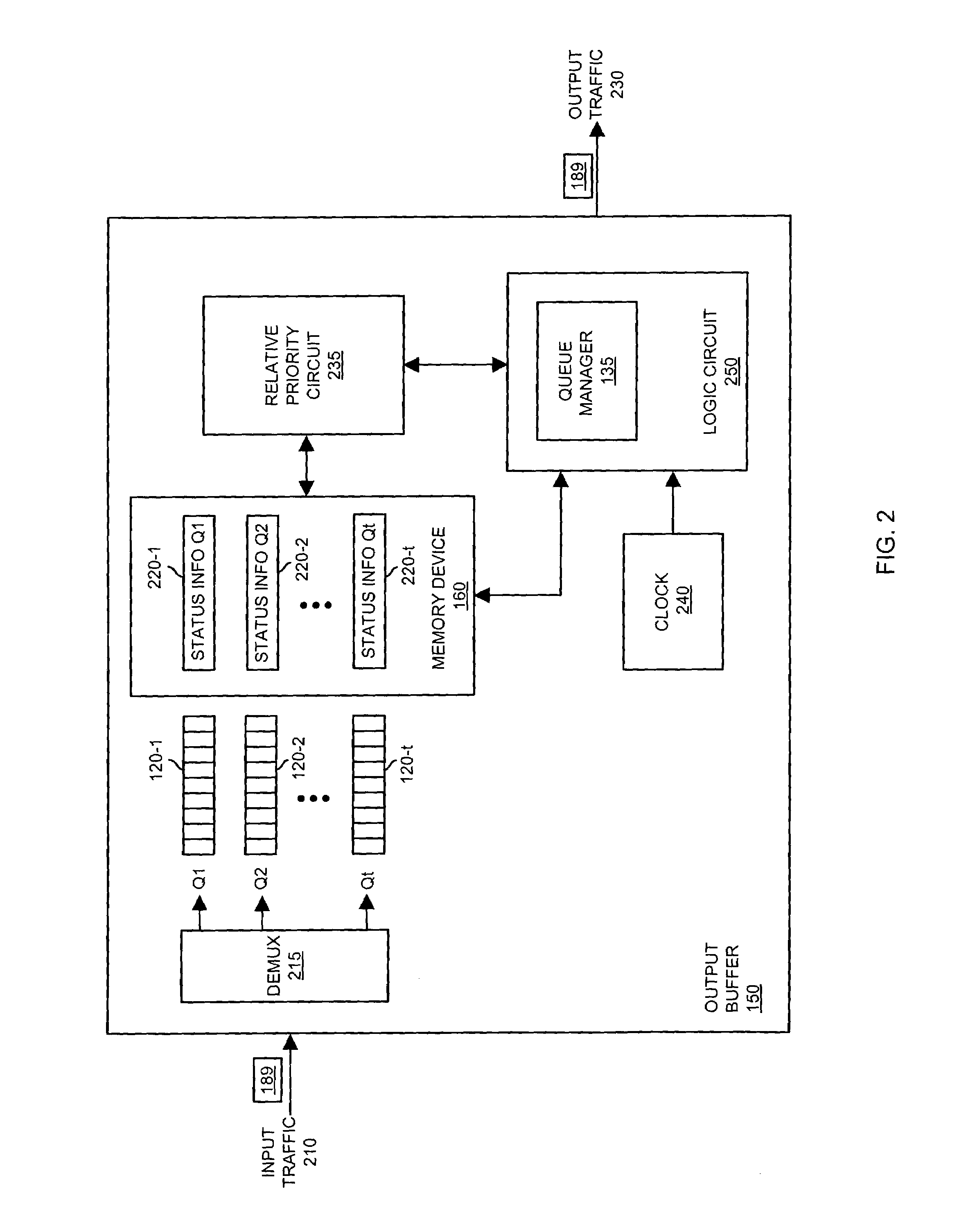Methods and apparatus for scheduling tasks
a task and task technology, applied in electrical apparatus, digital transmission, data switching networks, etc., can solve the problems of inefficiency of maintaining many calendars, inconvenient scheduling of tasks, and insufficient memory, so as to increase the flexibility of scheduling tasks
- Summary
- Abstract
- Description
- Claims
- Application Information
AI Technical Summary
Benefits of technology
Problems solved by technology
Method used
Image
Examples
Embodiment Construction
[0034]Networking devices such as routers implement hundreds, thousands, tens of thousands, or hundreds of thousands of data queues to temporarily store data packets for later transmission to intended targets. In such applications, data information is initially stored in a selected queue before it is eventually retransmitted from an output port of the router to the appropriate destination. As a result of ever-increasing demand for bandwidth (e.g., Internet access) and simultaneous sharing of routers, queues in the routers can be inundated with an excessive inflow of data. On the back end of the router, the one or more queues are scheduled for servicing so that each queue is fairly serviced by outputting data. If the queues are not serviced on a regular basis, clients can't be guaranteed at least a minimal rate of transferring data through a router.
[0035]As discussed, one aspect of the present invention involves scheduling queues for servicing based on the use of a hierarchical tree. ...
PUM
 Login to View More
Login to View More Abstract
Description
Claims
Application Information
 Login to View More
Login to View More - R&D
- Intellectual Property
- Life Sciences
- Materials
- Tech Scout
- Unparalleled Data Quality
- Higher Quality Content
- 60% Fewer Hallucinations
Browse by: Latest US Patents, China's latest patents, Technical Efficacy Thesaurus, Application Domain, Technology Topic, Popular Technical Reports.
© 2025 PatSnap. All rights reserved.Legal|Privacy policy|Modern Slavery Act Transparency Statement|Sitemap|About US| Contact US: help@patsnap.com



